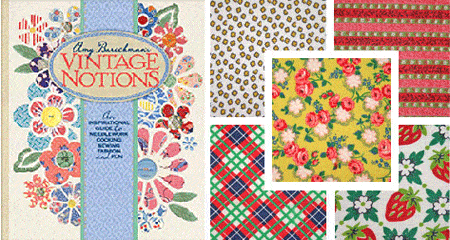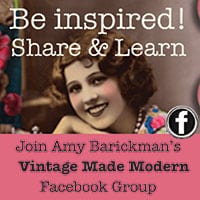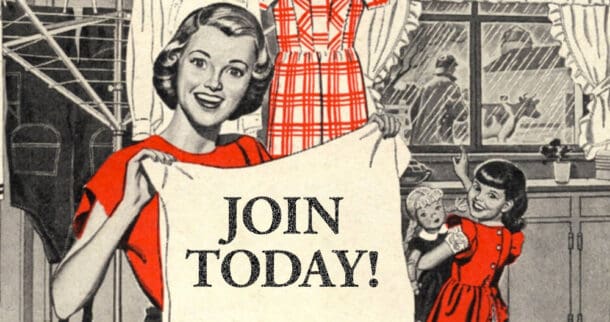In the early 1800s, staples such as grain, flour, sugar and animal feed began to be shipped in canvas bags instead of in the boxes that were used previously. To the pioneer woman whose life was a daily challenge, this introduction of a new cloth into the home spurred a number of inventive home uses (e.g. dish towels, diapers, and more). Not too long after, these women, desperate for material to make clothes out of, jumped at this source of cloth. Suddenly, feedsacks were being used extensively for everything from doll clothes to school clothes. Realizing that the more attractive and colorful bags would sell more “feed,” manufacturers began printing elaborate patterns, themes and colors on the bags.


With this surge in interest, the manufacturers ramped up their marketing again. There were printed sewing patterns right on the feedsacks while others printed beautiful, and sometimes elaborate themes and patterns. There were even entire books published showing fashionable designs, which sacks to use for what purpose and even pattern layouts (see the “Bag of Tricks†example). For collectors today, many of these feedsack-related items are extremely desired.
Advances in paper manufacturing and the development of plastics changed shipping practices and ushered in the demise of feedsacks. For may of us as collectors though, feedsacks remain a tresured part of our lives. For me feedsacks have not only entered my private collection over the years, but have gone on to influence a number of items at Indygo Junction, including our Pieced Pincushions and a number of our Yo Yo patterns. As well, a vintage Mother Goose feedsack inspired our embroidery book, A Stitch In Time with Mother Goose, and a line of fabrics I did for Red Rooster.

As well, now that you know that I love feedsacks, if you take a look at the cover of my latest book, Vintage Notions, you’ll see that it’s composed from scanned samples of feedsacks from my collection as well. This worked out so beautifully and added, not just a colorful touch, but a historical link to an important part of this country’s history and development of fabrics for fashion.
Who else loves feedsacks? I know you’re out there! In the Comments section, share a story with us relating to feedsacks and I’ll draw a winner June 1st to receive a copy of our Yo-Yo patterns and a copy of my embroidery book, A Stitch In Time with Mother Goose.
Thanks again for letting me share my love of all things vintage.
~ Amy




